Ric arrives at Domaine de la Romanée-Conti
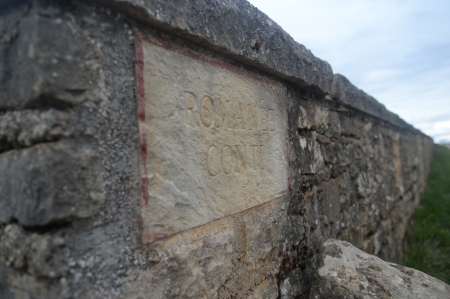 The pièce de résistance of my short tour in Burgundy, without doubt, was a visit to this most venerated estate of all in the world of oenology, Domaine de la Romanée-Conti, on the morning of 28 September 2015 where, through a most fortuitous turn of affairs that I need not elaborate about, we were granted access into its chai, its cellars and a tasting within, in addition to a personal tutorial about technical aspects of its winemaking whilst standing right on the soil of the most expensive piece of real estate in oenology, Romanée-Conti.
The pièce de résistance of my short tour in Burgundy, without doubt, was a visit to this most venerated estate of all in the world of oenology, Domaine de la Romanée-Conti, on the morning of 28 September 2015 where, through a most fortuitous turn of affairs that I need not elaborate about, we were granted access into its chai, its cellars and a tasting within, in addition to a personal tutorial about technical aspects of its winemaking whilst standing right on the soil of the most expensive piece of real estate in oenology, Romanée-Conti.
As we stepped through the gates of the nondescript-looking mansion (that does not, in any way, state that it is D.R.C.) immediately to the right of the old church in the little square of Vosne-Romanée, we were warmly welcome by M. Bertrand de Villaine, nephew of Aubert (owner of DRC), a stout stocky gentleman who appears, to the casual observer, to be more at home with rugby than his role as the chief winemaker of D.R.C., overseeing the entire vinification of all the wines within the D.R.C. stable. 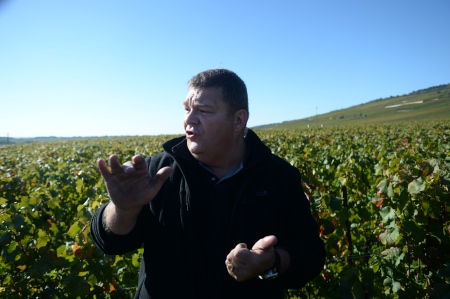 Together, we took a walk up the gentle slope to the monopole plot of Romanée-Conti, traversing its low clos (normally forbidden), striding up to its vines basking in the glorious sunshine of this cool beautiful morning. D.R.C. has been biodynamic long before it became the fashionable byword, Bertrand saying that it was the sensible thing to do. It seems 2015 has all the trappings of a superb vintage, the Indian summer coming on earlier than usual such that practically every vineyard had completed harvesting by the first week of September, and it was no exception at D.R.C.. Only ripe bunches growing off the main stems are picked while isolated bunches hanging off side stems are left alone as these tend to contain too much acidity and less sugar. D.R.C. is also experimenting with plot densities with some vineyards pushing up to 14000 vines per hectare from the usual 10000.
Together, we took a walk up the gentle slope to the monopole plot of Romanée-Conti, traversing its low clos (normally forbidden), striding up to its vines basking in the glorious sunshine of this cool beautiful morning. D.R.C. has been biodynamic long before it became the fashionable byword, Bertrand saying that it was the sensible thing to do. It seems 2015 has all the trappings of a superb vintage, the Indian summer coming on earlier than usual such that practically every vineyard had completed harvesting by the first week of September, and it was no exception at D.R.C.. Only ripe bunches growing off the main stems are picked while isolated bunches hanging off side stems are left alone as these tend to contain too much acidity and less sugar. D.R.C. is also experimenting with plot densities with some vineyards pushing up to 14000 vines per hectare from the usual 10000. 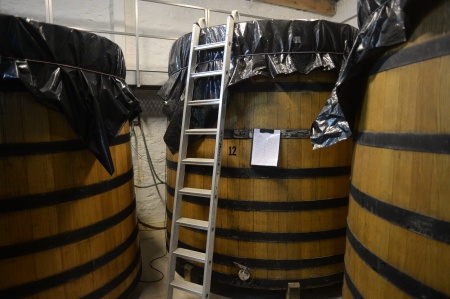 The average age of the vines are between 40-50 years and there is a continual process of vine renewal as old vines that are deemed to be past their prime are pulled, to be replaced by younger vines that will only begin yielding dividends more than ten years down the road. Here and there, particularly within the plot of Romanée-Saint-Vivant at this moment, one could see rows of greener vines indicating newer plantings.
The average age of the vines are between 40-50 years and there is a continual process of vine renewal as old vines that are deemed to be past their prime are pulled, to be replaced by younger vines that will only begin yielding dividends more than ten years down the road. Here and there, particularly within the plot of Romanée-Saint-Vivant at this moment, one could see rows of greener vines indicating newer plantings.
The Richebourg grapes were being pressed that morning and as we entered its chai, one could feel some relative warmth and a certain mushiness in the air, by-products of the heat and carbon dioxide released during fermentation. 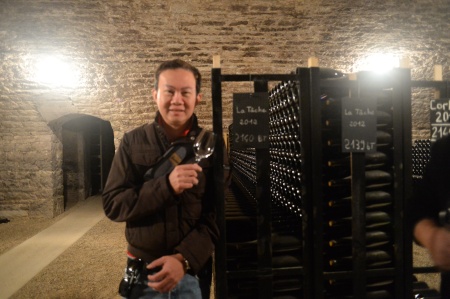 The chai appeared extremely modest and functional, with all of the 2015 harvest contained in only a few vats, driving home the scarcity of D.R.C. wines and, in a quiet corner, sat vat number 11 containing Romanée-Conti. D.R.C. ages its wines mostly in new oak.
The chai appeared extremely modest and functional, with all of the 2015 harvest contained in only a few vats, driving home the scarcity of D.R.C. wines and, in a quiet corner, sat vat number 11 containing Romanée-Conti. D.R.C. ages its wines mostly in new oak.
We then descended into its cellars, just a part that contained more recent vintages lying in bottle. Seeing the shelves of Romanée-Conti, La Tâche and Richebourg et cetera of various vintages was certainly orgasm-inducing. We finally arrived at the tasting room where Bertrand had brought two unlabeled bottles without telling us what they were, imploring us to taste them blind, and none of us dared to do otherwise. We began with a red, sporting a clear ruby with powerful floral aromas of red fruits and sweet dark berries. Red plums and tangerine dominate on the palate with a ferric trace, excellent in concentration and acidity but very controlled, producing a great mouthfeel, well balanced but still rather tight and not quite settled. Needs time. Bertrand quizzed us whether we thought it came from a cool or hot vintage, and we all thought the former, for there was absolutely no trace of heat stress nor any raisiny notes. 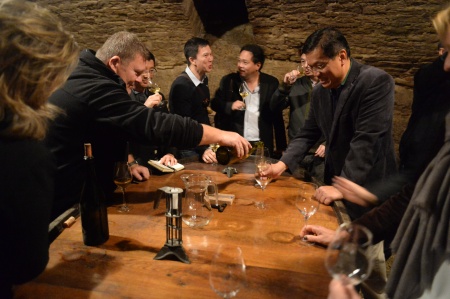 I guessed quietly an Échezeaux and indeed it turned out to be a 2003 Domaine de la Romanée-Conti Échezeaux Grand Cru, and I suppose the little blinded exercise was to drive home the point of expert vineyard management in dealing successfully with difficult vintages, 2003 being the hottest vintage in decades.
I guessed quietly an Échezeaux and indeed it turned out to be a 2003 Domaine de la Romanée-Conti Échezeaux Grand Cru, and I suppose the little blinded exercise was to drive home the point of expert vineyard management in dealing successfully with difficult vintages, 2003 being the hottest vintage in decades.
Next was an unlabeled white that we were already informed was a Bâtard-Montrachet, producing an effusive bouquet of white flowers, caramelized honey and melons with a quiet intensity, displaying harmonious citrus and subtle minerality on the palate with fine delicacy, acidity and persistence with just a ferric trace. Again, Bertrand probed us to hazard a guess about its vintage. It turned out to be a 2005 Domaine de la Romanée-Conti Bâtard-Montrachet Grand Cru, the second warmest vintage after the 2003 but, like the previous wine, there was no indication at all on the palate that it was so. 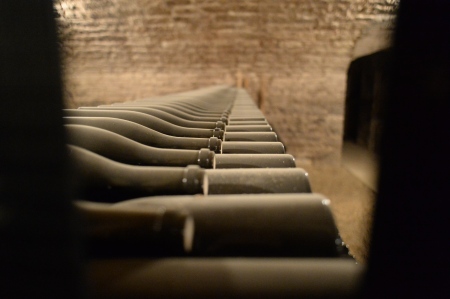 One doesn’t look for absolute fullness in a Bâtard-Montrachet and perhaps one shouldn’t, for it is never as full as a Chevalier-Montrachet, let alone Montrachet itself and, perhaps, this exercise demonstrates again the expertise of D.R.C. in managing its wines to reflect the terroir accurately. It has been a real honor and privilege, as an outsider, to have experienced such intimate hospitality from DRC and, besides being indebted to M. Bertrand de Villaine for his time, there are certain other people to be thanked but who prefer to remain anonymous and they shall not be forgotten.
One doesn’t look for absolute fullness in a Bâtard-Montrachet and perhaps one shouldn’t, for it is never as full as a Chevalier-Montrachet, let alone Montrachet itself and, perhaps, this exercise demonstrates again the expertise of D.R.C. in managing its wines to reflect the terroir accurately. It has been a real honor and privilege, as an outsider, to have experienced such intimate hospitality from DRC and, besides being indebted to M. Bertrand de Villaine for his time, there are certain other people to be thanked but who prefer to remain anonymous and they shall not be forgotten.